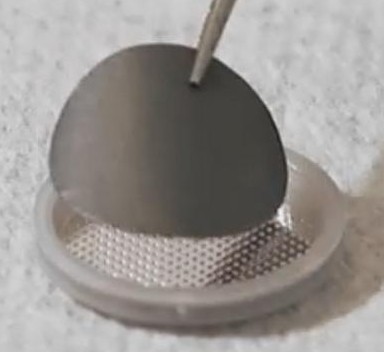April 15, 2016 – The University of Sydney in Australia, in its research on catalytic chemicals and fuels, appears to have invented a promising new battery technology which has attracted an $11 million investment from a United Kingdom company, Armstrong Energy.
Professor Thomas Maschmeyer heads up the team at the University’s Institute for Nanoscale Science and Technology. Their work on nanostructured gels using zinc-bromine has proved promising. This catalytic material is flexible and scaleable. The picture below shows just how small the form factor for this battery can get.
Other advantages. It can be fully charged in minutes while its efficiency exceeds all existing lithium-ion technologies. It is also fire retardant and cheaper to make. That makes it a candidate to replace the predominant battery technology in commercial use today.
Armstrong’s immediate interest is to use the battery for storage backup in integrated energy systems with rooftop solar installed on homes and buildings. The company also sees the technology as solution for energy utilities to accompany renewable sources like wind and solar where it would serve as a buffer to feed the grid during low production periods.
Because the battery material comes as a gel it is malleable and capable of being used for almost any battery need from mobile phones to electric vehicles to homes and buildings. Maschmeyer states, “the idea is to build houses with batteries inherently included as part of their structure.” What does Maschmeyer mean? The battery can be integrated into prefabricated wall materials making the building using this material one giant battery.
The University’s Australian spinoff company goes by the name Gelion. The battery was featured in a recent program on Australian television describing the future of battery storage. Armstrong and Gelion anticipate commercialization within the next four years.









